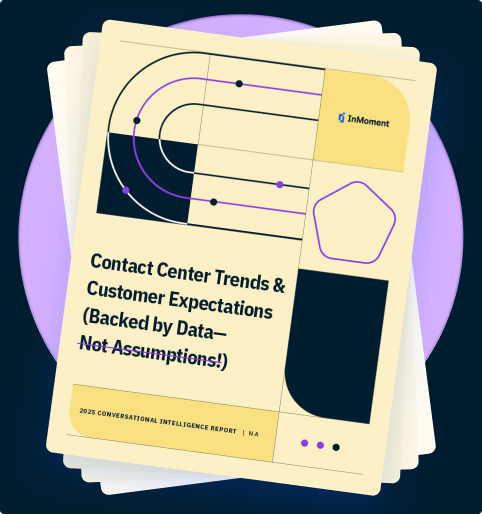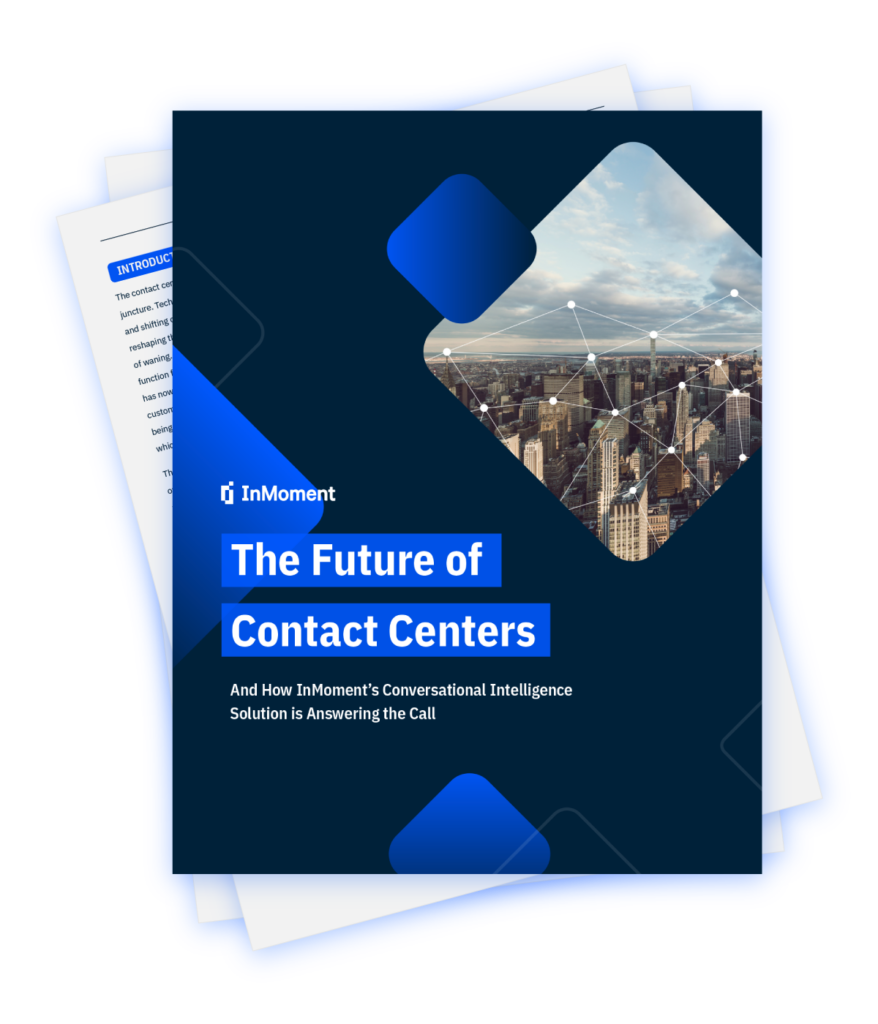Conversational Intelligence for Location-Based Campaigns: Use Cases and Benefits
Find out how to start using conversational intelligence to create personalized, effective location-based campaigns that drive results.
Conversational intelligence (CI) is making a big difference for countless growing and large businesses, helping them understand customer interactions at scale with a level of precision that seemed impossible just a few years ago.
Most people think of contact centers, such as customer support call centers and help desks, as the main use case for conversation intelligence software. It’s true that CI software drives positive results for call centers, reducing response times, improving outcomes, and producing data-driven insights for agent coaching. But CI is also making inroads in numerous other business areas.
Location-based marketing is one use case that’s gaining a significant amount of traction. More and more businesses are seeing the value in leveraging conversational intelligence in their location-based marketing, helping them better target those marketing efforts through greater understanding of customer sentiment.
What Is Conversational Intelligence, and Why Use It For Location-Based Campaigns?
Conversation intelligence is a technology that collects, interprets, and analyzes conversational interactions, typically between customers and businesses. These interactions can be text-based (email, chat) or voice-based (phone, where the conversation is recorded and transcribed) and can originate from many different channels.
CI software collects and analyzes that conversation data using both natural language processing and machine learning algorithms. Then it reports on sentiment, drawing out powerful insights that can help organizations improve the customer experience.
So what does this have to do with location-based marketing? CI technology enables real-time insights into customers not just as a whole but also divided into locations. With clearer insights into how users in each specific location are responding, brands can target them with ever more personalized marketing.
Key Benefits of Using Conversational Intelligence for Local Campaigns
Using conversational intelligence tools for your local marketing efforts can help you achieve these tangible business outcomes.
Improved Local Targeting and Personalization
The tools you’re already using for local marketing give you the ability to segment users by specific location, but CI helps you take this capability to a far more personalized level. With CI tools, you can identify precise audience segments within each geographic area.
In other words, without CI, you can personalize a campaign to a location (using geo-targeting, geo-fencing for mobile devices, IP addresses, and the like), but you can’t identify or target specific demographics within that location or region. With CI, you can hyper-personalize campaigns to target only frustrated users in a specific location, or only satisfied customers, and so on.
For example, a “give us another chance” message feels bizarre to happy users but might be just the ticket to regain someone with a negative sentiment. The opposite may be true of a “The quality you know and love” message, which could be seriously off-putting to negative sentiment customers but highly converting among those with positive user experiences.
Increased Customer Engagement and Satisfaction
Any opportunity to make your marketing efforts more meaningful is something worth pursuing, and CI is a powerful way to do exactly that. Customers who feel like a business is addressing their specific, local needs generally walk away from a marketing interaction with a more positive view.
But to get the tone of a hyper-local campaign right, you need to understand what customers in that area are feeling. Otherwise, attempts may come off as dull or ingenuine, especially when attempted at scale.
CI helps businesses tune in to the feelings and sentiments of local customer segments, leading to more focused location-based campaigns that boost engagement and improve satisfaction.
Better Campaign ROI
CI-enhanced marketing can also improve your campaign ROI. Let’s walk through the steps of why:
- Every ad view/impression costs money (rates vary widely, but between $0.11 and $0.50 per click is a common range).
- Not every viewer will convert.
- Some ad views go to viewers with low or no potential to convert.
That last step is the frustrating one. Spending money on ads with zero potential is a lot like setting dollar bills on fire. Using CI data to understand sentiment allows you to cater your advertising messaging and targeting for better conversions and a greater return on your investment.
Data-Driven Decision Making
Marketers know that there are plenty of vibes at play in the industry. Highly market-tested, million-dollar commercials fall flat or even negatively impact a brand based on, well, vibes.
But the savviest, most experienced marketers will tell you that behind any real vibe is a very real set of data. Too much vibe-reading (without looking into the data behind the vibes) can become problematic.
CI software unlocks richer, more granular audience data, including how those local audiences are feeling. Businesses can use this rich data to inform their decision-making, refine their marketing strategies, and balance resource allocation in response to hard numbers—not just vibes.
Use Cases of Conversational Intelligence in Location-Based Campaigns
We’ve covered why conversational intelligence makes sense in local marketing, so now it’s time to examine the how. Consider these five specific use cases where businesses are using CI to accomplish more with their location-based campaigns.
1. Enhancing Geo-Targeted Advertising
With CI, businesses can better tailor their ads to local target audiences based on conversational trends. For example, say a community discusses an upcoming neighborhood-wide event on social media. A retailer might pick up on this via CI and run a hyper-local ad campaign with digital marketing messages highlighting products that people might want for that event.
2. Improving Local Customer Engagement
Large brands can also use CI to deliver more authentic local engagement at scale, leading customers to see individual business locations as part of the neighborhood or community, not just a faceless brand.
A grocery chain might identify that customers in a specific neighborhood frequently mention a product on social media or complain to customer support that they can never find a particular product. Neighborhood stores could then adjust both their targeted ads (using location targeting to reach potential customers in proximity to a specific physical location) and in-store placement, showing a responsive attitude to local concerns.
3. Optimizing Multi-Location Campaigns
CI also enables businesses to identify differences in responses and performance across multiple geographic locations. Using conversational analytics, businesses can identify what is and isn’t working in different locations and make campaign adjustments where needed.
Along the same lines, businesses can make more informed decisions about resource allocation. Is a retail store campaign performing especially well in location A, but especially poorly in location C? Increasing ad spend in location A’s region makes sense, while dialing back (or reworking the campaign entirely) may be the better approach in location C’s area.
4. Driving Real-Time Personalization
When paired with an end-to-end customer experience (CX) platform, conversation intelligence can even enable adjustments in real time based on live data from specific areas. Sudden weather events could trigger adjusted messaging, steering customers toward indoor experiences or reminding them of weather-related items.
Brands can use real-time personalization to adjust messaging based on local events as they are happening or immediately afterward as well. The possibilities here are wide-ranging, depending on what a business offers and how real-time events might affect sales.
5. Tracking Regional Sentiment and Trends
CI analyzes sentiment on multiple levels, including at a regional level. Organizations can use this level of granularity to identify emerging trends that may not extend across the entire customer base but are still significant at the regional level.
There are all sorts of reasons (from regional preferences to slang to sensibilities) that a particular campaign could perform well in most markets but poorly in a specific region. Rather than scrapping a campaign entirely, businesses can use regional sentiment tracking to identify where to keep the campaign and where to adjust.
How To Get Started with Conversational Intelligence for Local Campaigns
Conversational intelligence can deliver powerful insights across all types of location-based campaigns. But first, you’ll need to integrate the tools and platforms you’re using for both CI and location-specific data.
The simplest way to do this is to use InMoment’s integrated Experience Improvement (XI) platform, where the integration is done for you automatically. But, whether you use InMoment’s comprehensive tool or another option, you can follow these five steps to get started with CI for local campaigns:
- Pair data sources: Ensure you can access your conversational data sources and location data in the same place (and that those data sets can communicate with one another).
- Select the right tools: Not every analytics tool is capable of collecting or working with CI data, so ensure you choose one with dedicated CI features.
- Identify key location-based metrics: Some metrics have highly localized value, while others aren’t as useful at the location level. This may also vary depending on what you’re selling and who your customers are.
- Train staff to analyze localized insights: Make sure those who work with your analytics tools know how to interpret localized insights and when to prioritize them.
- Optimize region-specific marketing efforts: Use the insights you’ve gained to begin optimizing marketing campaigns for specific regions where applicable.
Elevate Your Location-Based Campaigns With Conversational Intelligence from InMoment
Conversational intelligence is a true paradigm shift for businesses that need to understand customer sentiment at scale. CI is increasingly playing a role beyond customer support, expanding into marketing and location-based marketing efforts.
InMoment is the Experience Intelligence platform built for large businesses that need a modern approach to scaling customer experience efforts and understanding customer sentiment. It’s the ideal solution for data-minded organizations looking to step up their marketing efforts with conversational insights.
See how your business can leverage InMoment’s conversational intelligence tools to deliver hyper-personalized marketing at scale.




